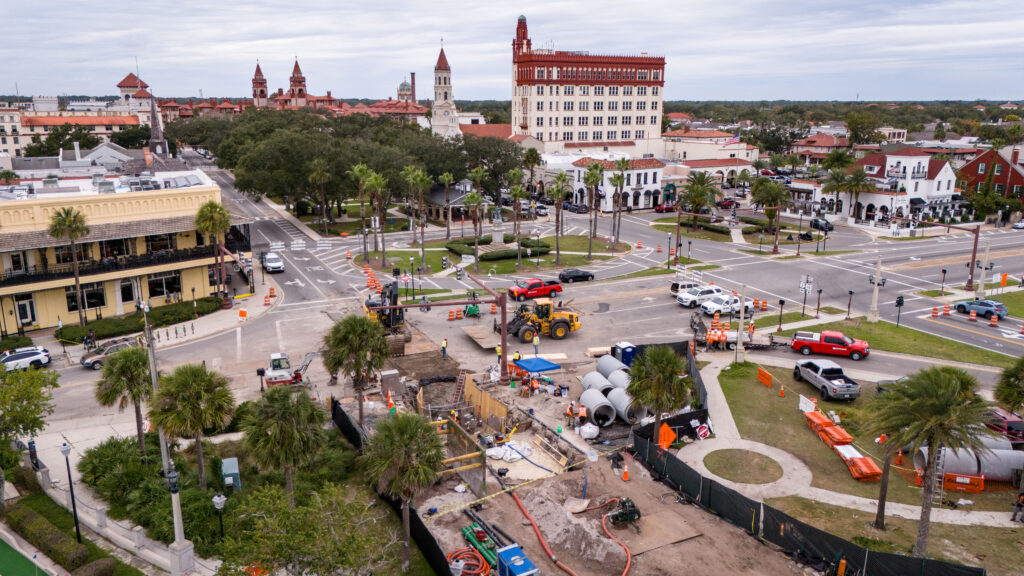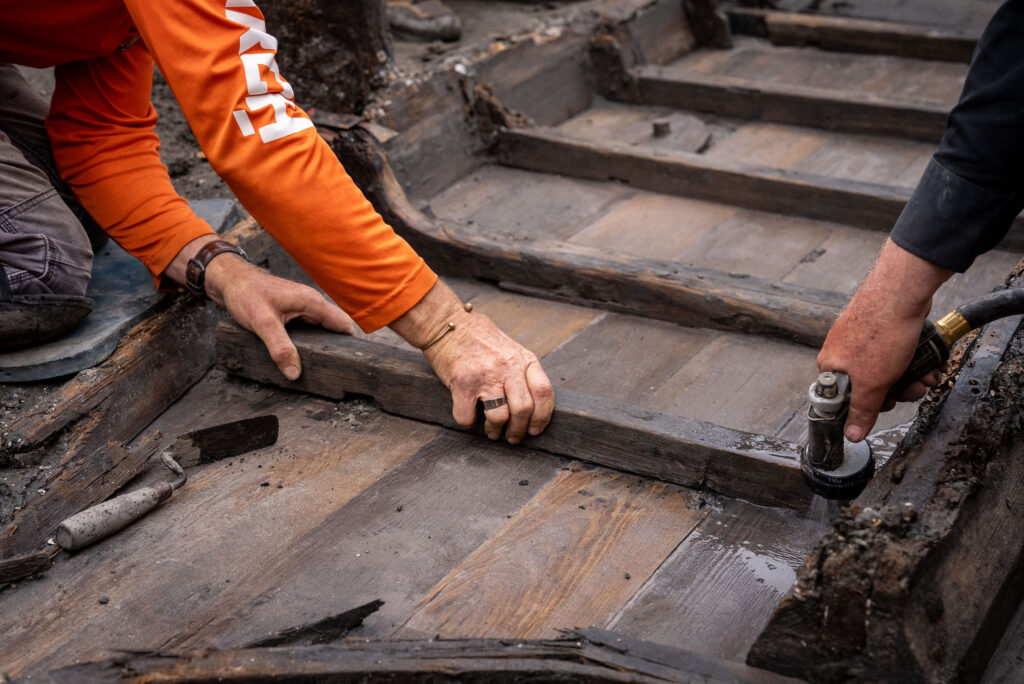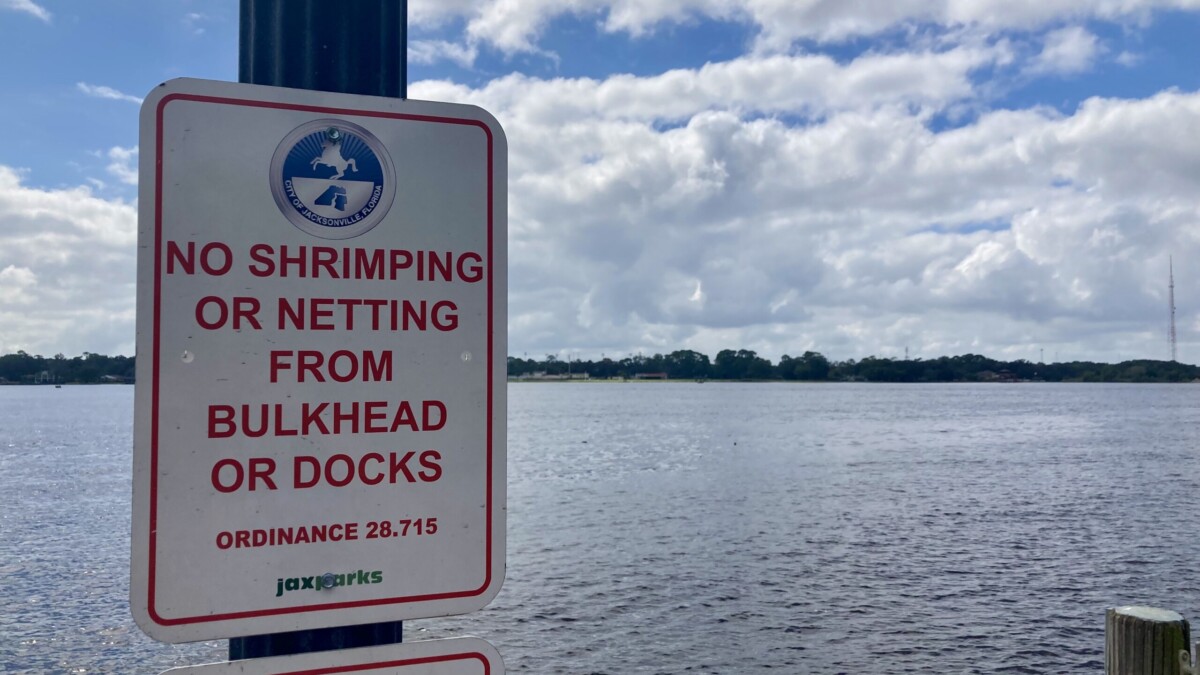The wooden remains of a ship had sat about 8 feet under a landscaped approach to St. Augustine’s Bridge of Lions, forgotten since sinking about 140 years ago and the Matanzas River silted over its planking and curved hull.
The preserved remains of what appears to be a 19th century ship were found just over a week ago when a Florida Department of Transportation crew was digging to install ducts for a drainage improvement project where Avenida Menendez intersects Florida A1A, one of the busiest intersections in the historic tourist town.

FDOT had already sub-contracted with Southeastern Archaeological Research to help if something surfaced during the $4.2 million drainage pipe project that began this past spring. And sure enough, as crews dug in the mud behind a riverfront seawall, a timber section of the buried ship appeared near remains of an old dock.
“We believe the vessel may have sunk unexpectedly and, over time, was silted in. That is why it was preserved so well,” FDOT District 2 Secretary Greg Evans said in a statement. “It was encapsulated in soil and mud, so there was no air contact for it to decay. It’s truly an incredible find.”
What’s left of the buried shipwreck includes decking with 12 ribs connecting what’s left of a lower hull, says James Delgado, senior vice president at SEARCH, which led this week’s excavation and recovery of the remains.
“We believe the vessel to be a small single-masted, shallow-draft sailing craft of the 19th century that was likely used to extract fish and shellfish from coastal waterways and directly offshore,” Delgado says. “With a dedicated team, including support from the local community and the on-site construction team, we were able to extract the vessel in order to allow the important work on the community’s infrastructure to continue.”

The artifacts found with the wreck helped identify it as a possible fishing boat from the late 1800s.

The gently corroded wick and burner part of a kerosene lamp, most of its black paint intact. Two coconut shells, probably used as drinking cups. The remains of two leather shoes underneath the decking, probably a crew member’s, one with a button made from a seashell. And some coins, including an 1886 nickel and a Morgan silver dollar, which were minted from 1878 to 1904.
The items mean that the ship probably was in use when it sank, FDOT spokesman Hampton Ray says.

After being removed earlier this week, the ship will be carefully conserved, FDOT says. And the state says there’s no delay in the project’s completion timeline because time was built in in case of issues like this one.







